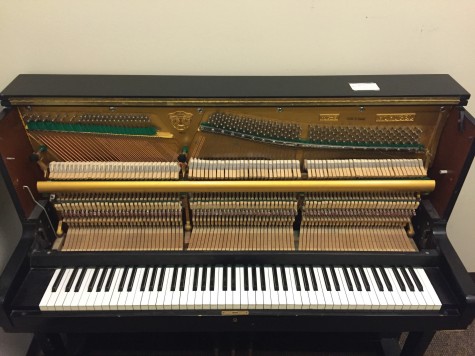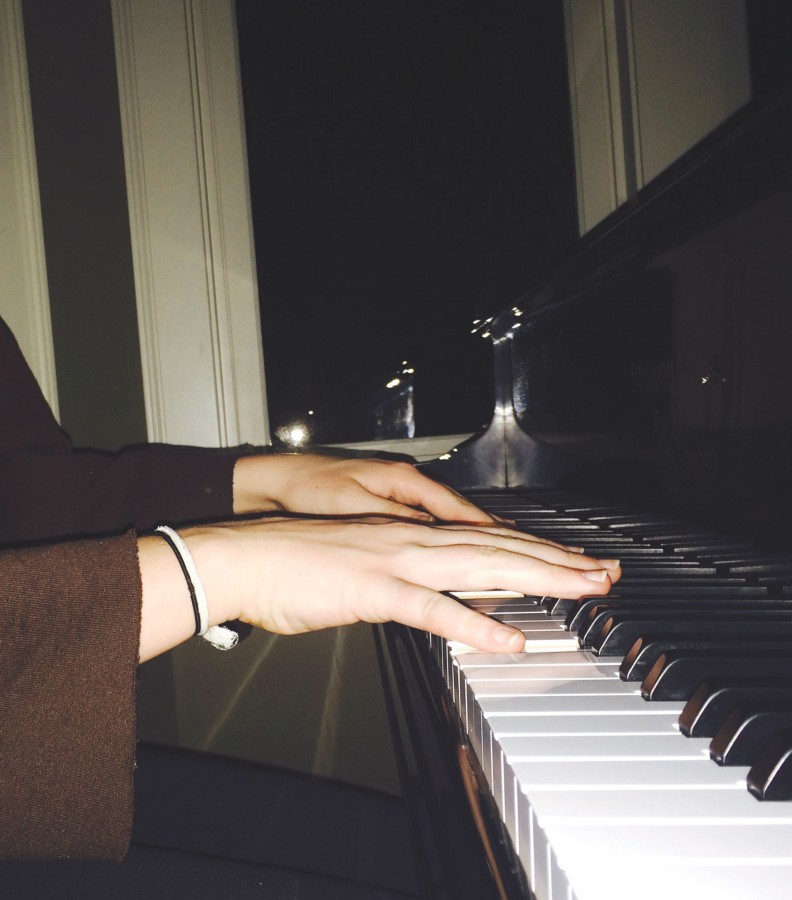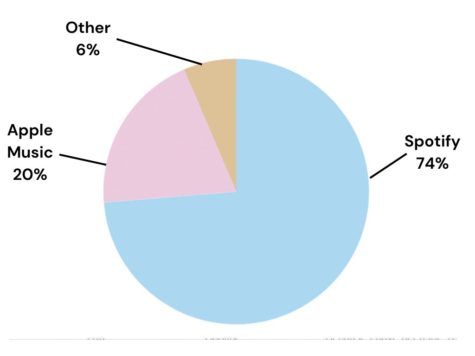Where music and physics align
TASC is a time for some students to settle into practice rooms, hidden away from the obvious eye all around school. Passing the art department, musicians like April Wang ’16 can be heard playing the piano in a practice room. In fact, there are numerous students like Wang who have the musicality behind the music, but don’t know the science behind it.
Vibration plays a significant role in creating sound for all stringed instruments, including the piano. Inside the piano, there are up to 236 strings, all with different lengths that correspond to 88 separate pitches. There are up to three strings for one pitch.
The strings vibrate when a pianist strikes a note, creating sound waves that produce a frequency. The frequency varies with different pitches and volume.
Physics teacher Steve Kaback explains this phenomenon: “pitch is a result of a vibrating object doing so at different frequencies.”
Frequency is a description of the number of vibrations the sound source creates per second, and the medium of the frequencies of a sound wave represents the pitch. Therefore, the higher the frequency will produce a higher tone.
The magnitude of a sound wave – the amplitude – dictates the volume of the pitch. The greater the amplitude, the louder the sound. In addition, when vibration occurs in the sound wave, it produces natural frequency, which enables the atoms to move, creating resonance. Most importantly, the natural frequency amplifies resonance on the string and in the piano, which a produces a louder sound.

The piano contains up to 236 strings, corresponding to 88 separate notes.
Physics teacher Rebekah Johnson sums up the correlation between frequency, pitch, and volume. “The density of the string dictates the wavelength, and length of the string dictates the frequency, so by varying the lengths and density of the strings, you can make the wave travel through that air differently. That’s what will dictate the different pitch you hear.”
However, music goes beyond the scientific realm. Musicians expressed how piano has helped them both mentally and physically. John Mullan ’16 says, “ [piano] has the uncanny ability to relax me and to relieve stress.” On the other hand, Michael Feldkamp ’18 says, “it strengthens fingers, increases coordination, and helps with memory.”
Whether you’re a kid who learned to play an instrument from your parents’ pressure or someone who simply enjoys listening to music, you might have noticed that music has a unique attraction that goes beyond physical explanations. The end results can bring a crowd to their feet, with thunderous applause and encores, but all of that wouldn’t be possible without the a string, vibrating to create glorious harmony.

Maxine has been a Spectrum Editor since the spring semester of her Freshman year. She was the Student Life Editor for her freshman/sophomore year on staff,...

Deniz has been an "editor" since the beginning of his junior year and declares himself the "bananagram king." He enjoys the color brown and long walks...








